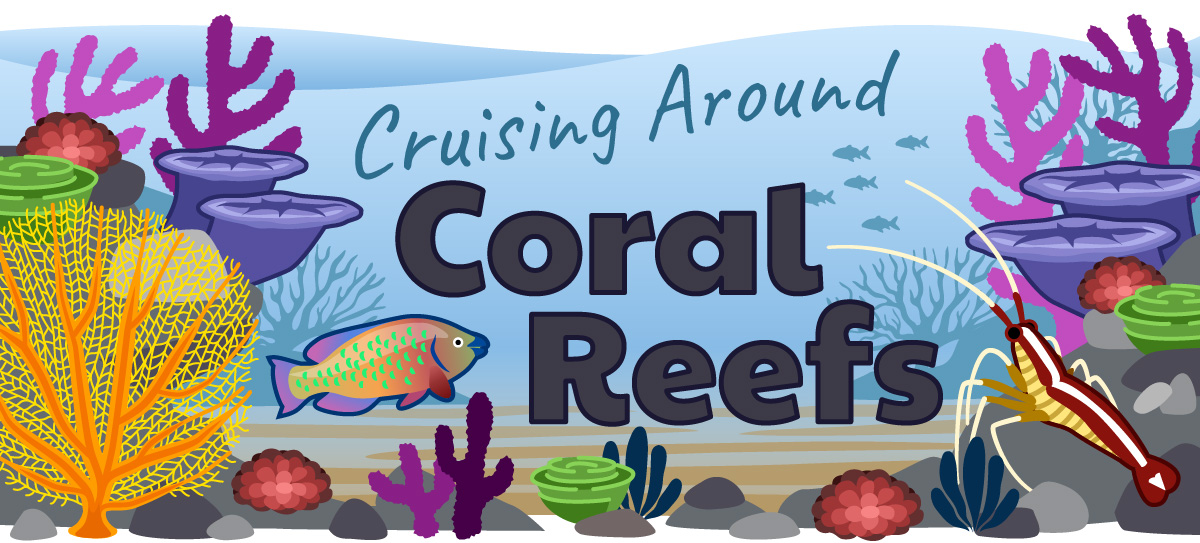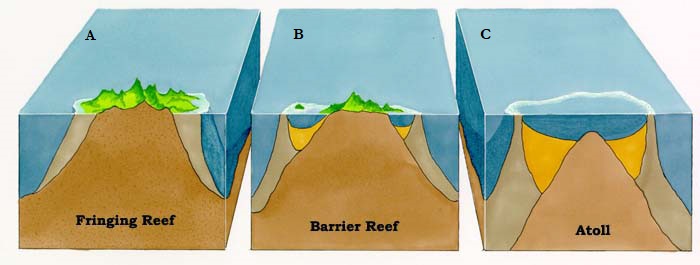
Illustrated by: Sabine Deviche
What is a coral reef?

Diving down into the tropical waters, you find yourself in the middle of an underwater city. Thousands of different kinds of fish zoom around you in the middle of their rush hour traffic. As you swim closer, you discover even more creatures, like crabs, sea stars, even an octopus living here. They hide in all the cracks and crevices between rock-like structures. But these are not rocks at all. They’re animals called corals and they’re the architects of this marine metropolis.
Looking closer, you see that the corals are made of hundreds of tiny creatures called coral polyps. They are clear-bodied organisms with tentacles that sway gently with the ocean current. Each polyp has played a part in constructing its coral colony. Coral reefs form when colonies of corals grow in the same area.
Where are coral reefs found?
A coral reef would not exist without its corals. So, you can only find reefs where corals are able to grow. Corals happen to be sensitive to extreme changes in both temperature and light. So, you can only find them in shallow tropical and sub-tropical seas.
Coral reefs cover less than 1% of the world’s oceans but are home to more than 25% of all marine life. Much like trees in a forest, corals provide homes and shelter to so many different species. Together these species waste very few resources.

How reefs grow
How do these wild centers of life get started? Teeny tiny polyps. A new reef is formed when traveling coral polyps are washed into a new coastline. The reef starts by growing close to the shore, and it is first known as a fringing reef. Over time, the land near the reef might sink or wear away. (But corals can help prevent the reef from sinking too!) Eventually, a lagoon forms between the reef and the land. This gap turns the reef into a barrier reef.

An island will sink completely under the ocean over time. However, if a reef grows quickly enough, it can stay even after the island is gone. These are called atolls—reefs that surround a lagoon in the middle of the ocean.
Read more about: Cruising Around Coral Reefs
Bibliographic details:
- Article: Cruising Around Coral Reefs
- Author(s): Luis Gutierrez
- Publisher: Arizona State University School of Life Sciences Ask A Biologist
- Site name: ASU - Ask A Biologist
- Date published:
- Date accessed:
- Link: https://askabiologist.asu.edu/explore/coral-reefs
APA Style
Luis Gutierrez. (). Cruising Around Coral Reefs. ASU - Ask A Biologist. Retrieved from https://askabiologist.asu.edu/explore/coral-reefs
Chicago Manual of Style
Luis Gutierrez. "Cruising Around Coral Reefs". ASU - Ask A Biologist. . https://askabiologist.asu.edu/explore/coral-reefs
Luis Gutierrez. "Cruising Around Coral Reefs". ASU - Ask A Biologist. . ASU - Ask A Biologist, Web. https://askabiologist.asu.edu/explore/coral-reefs
MLA 2017 Style

Coral reefs cover less than 1% of the world’s oceans but are home to more than 25% of all marine life.
Be Part of
Ask A Biologist
By volunteering, or simply sending us feedback on the site. Scientists, teachers, writers, illustrators, and translators are all important to the program. If you are interested in helping with the website we have a Volunteers page to get the process started.


